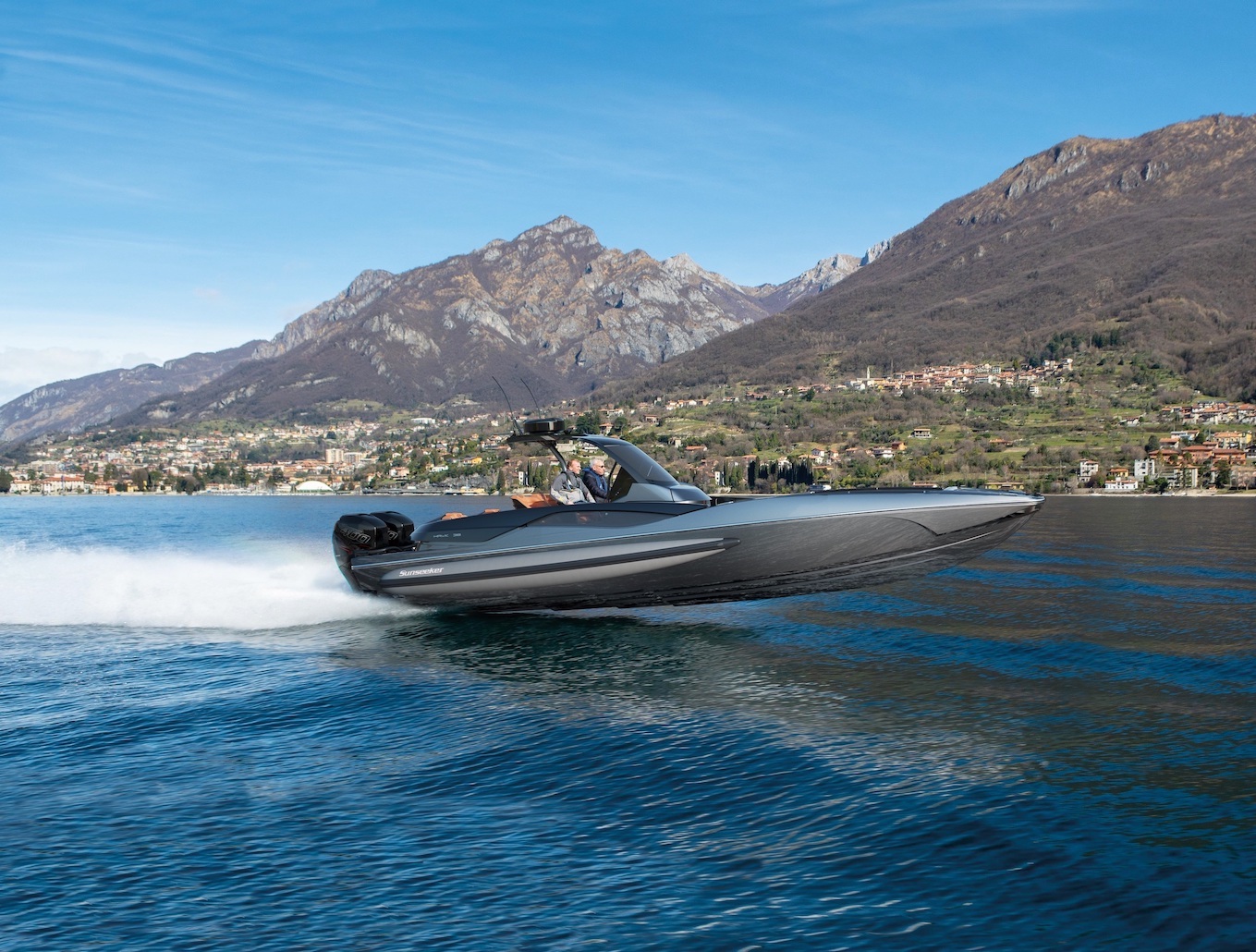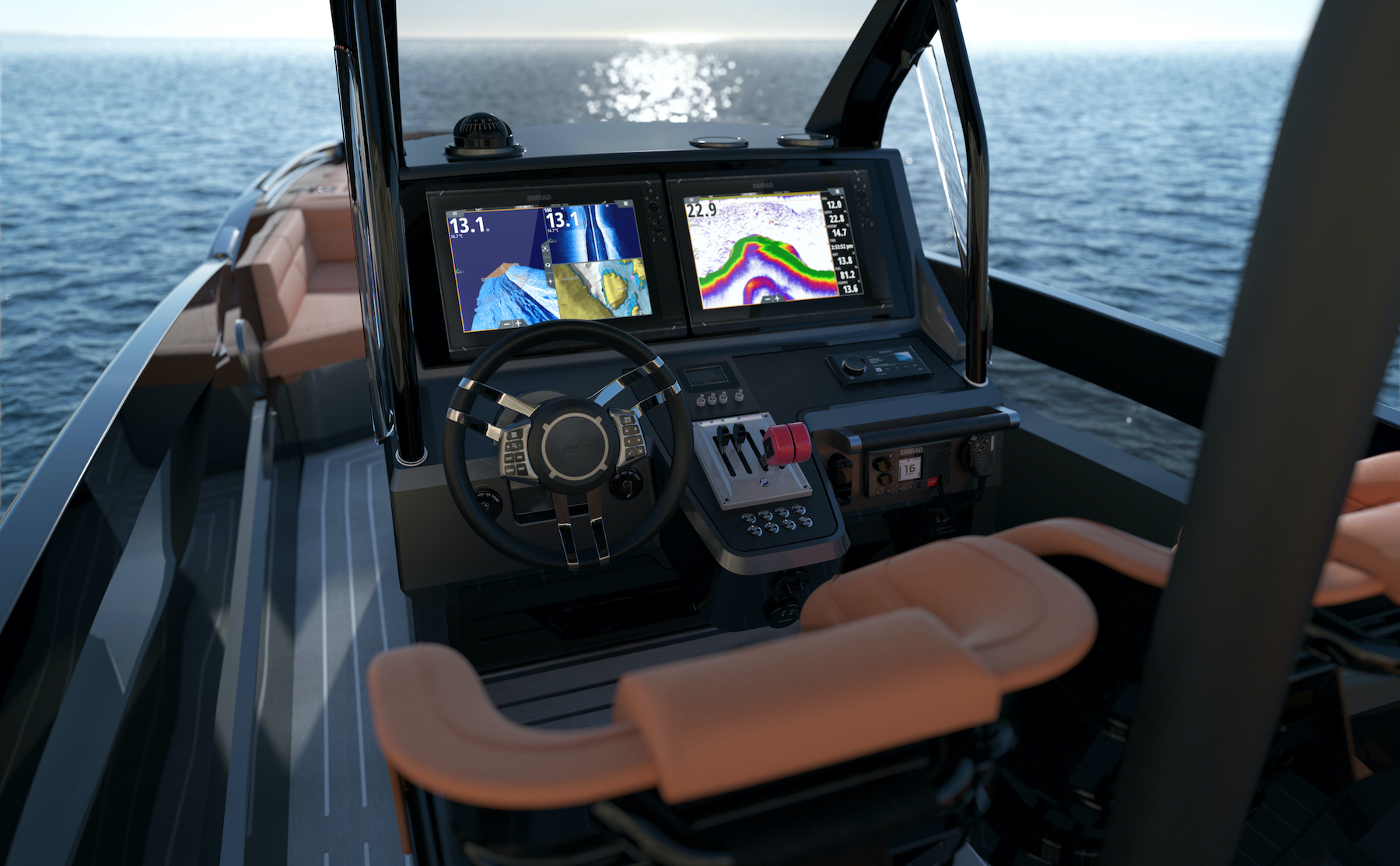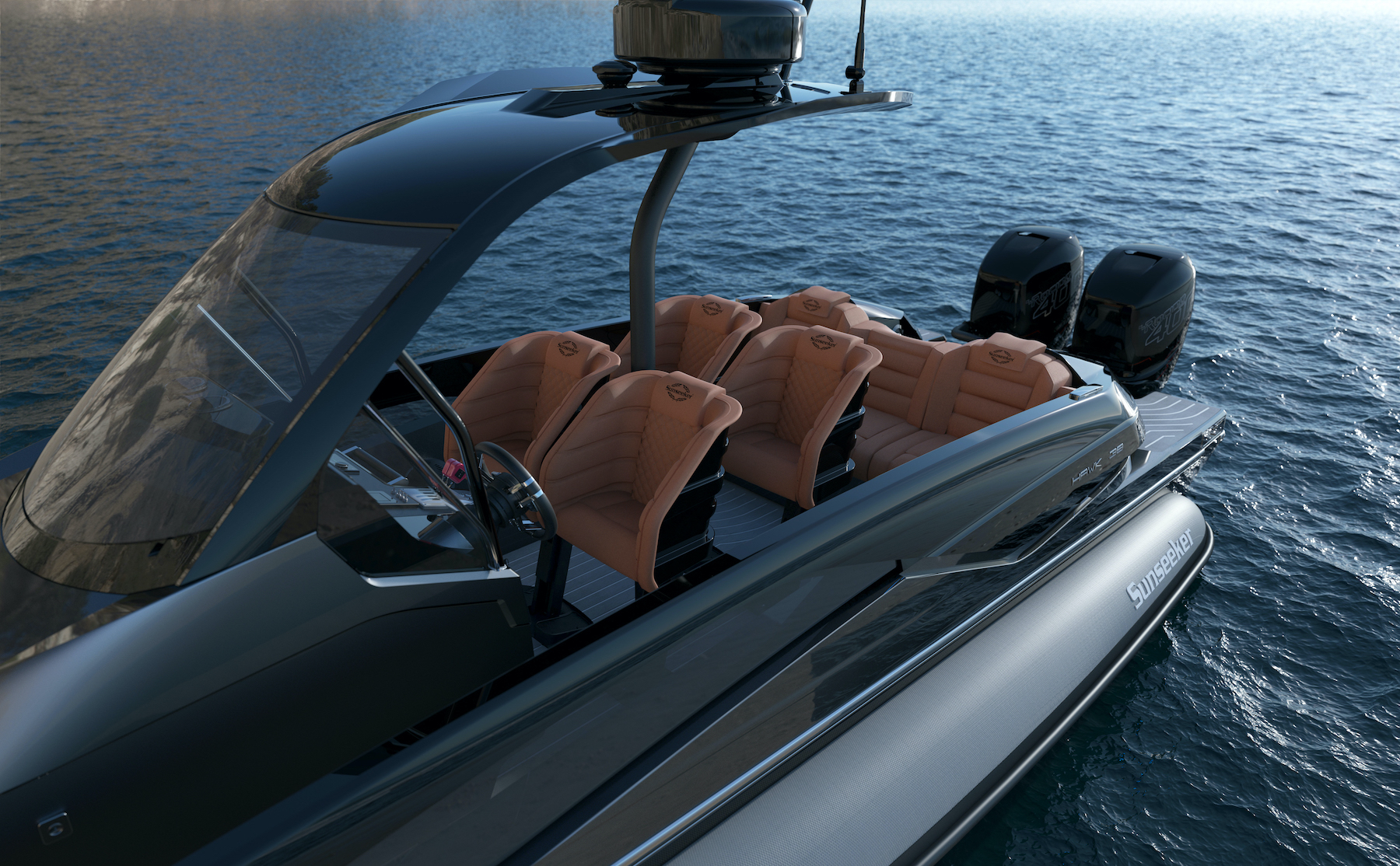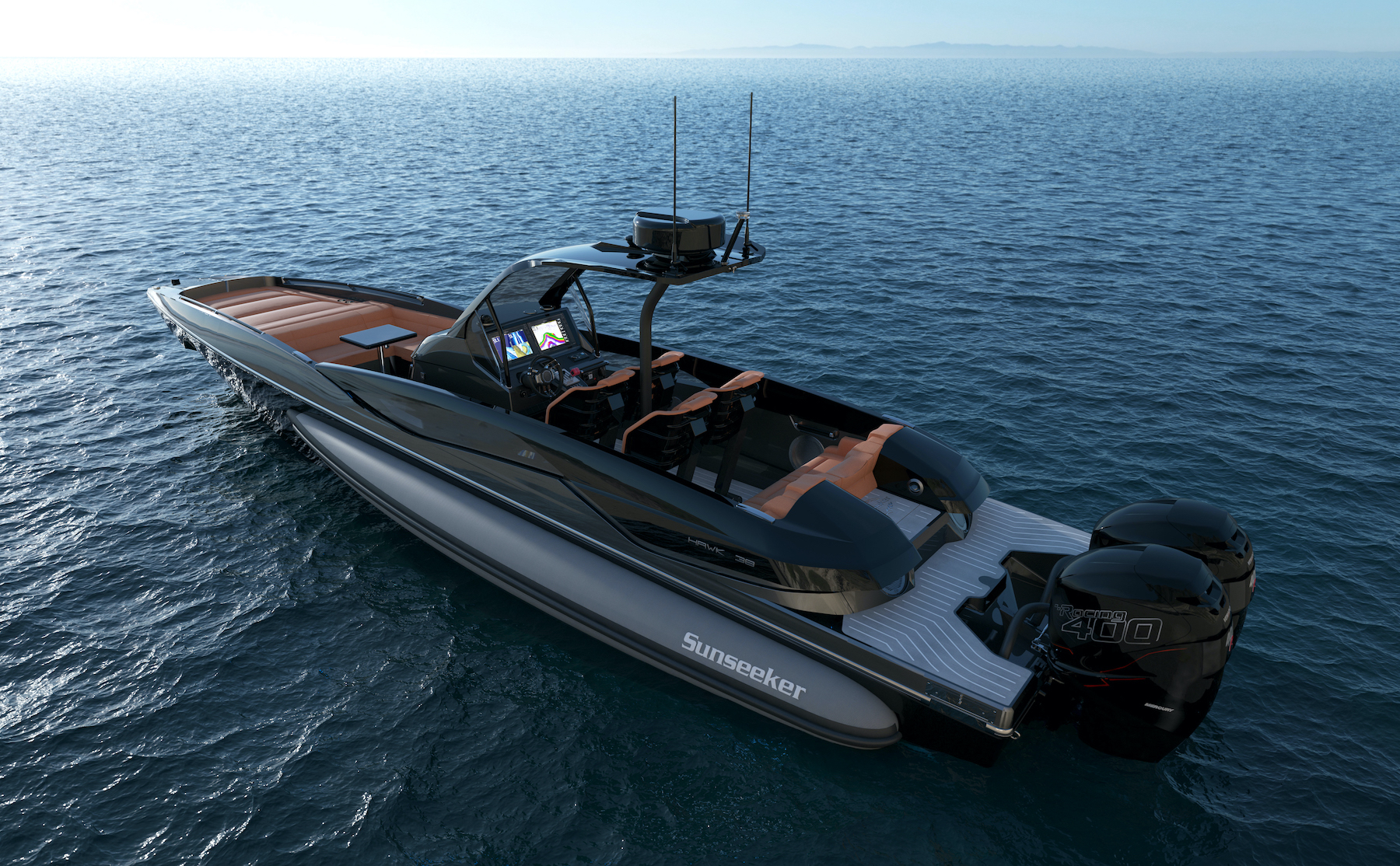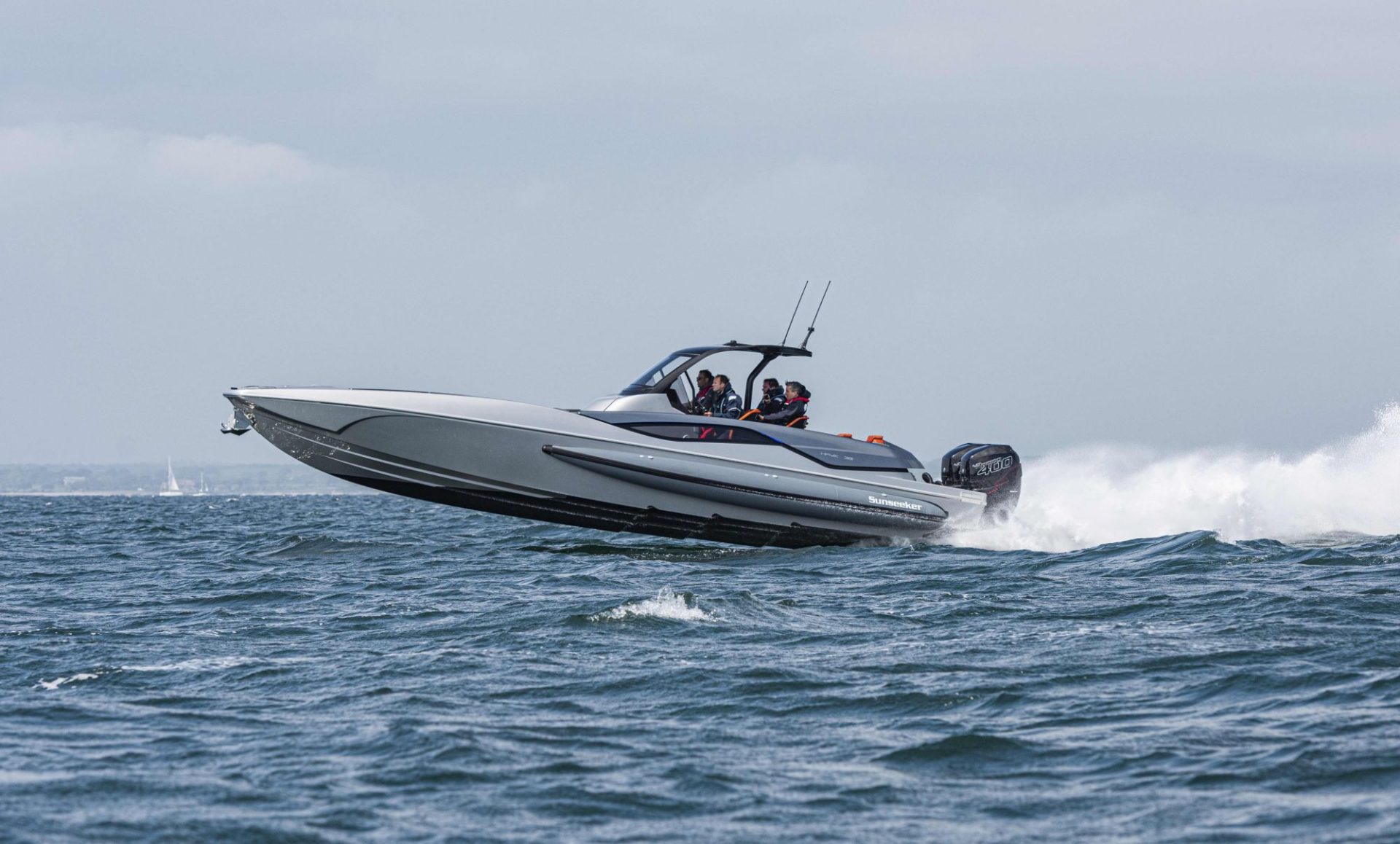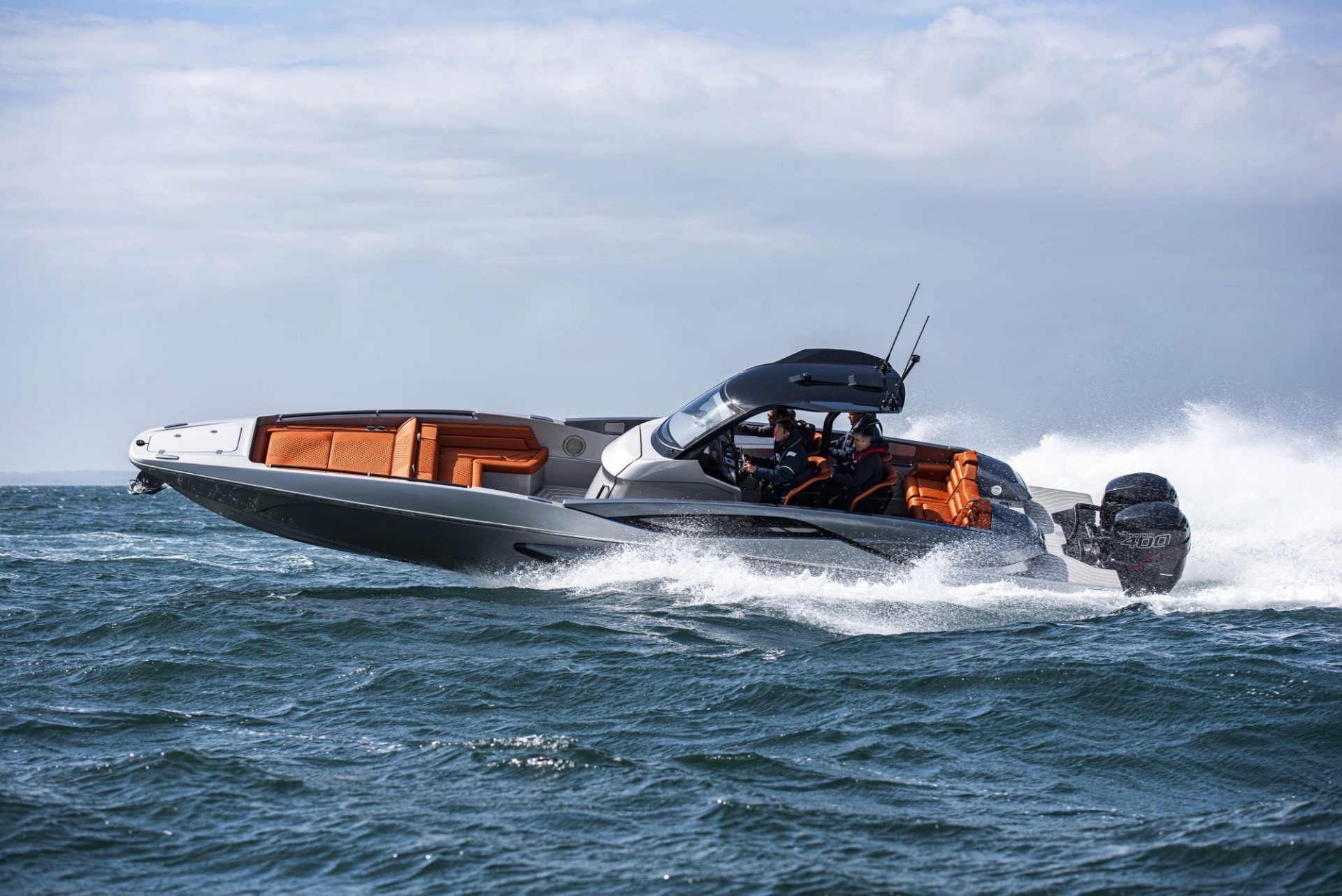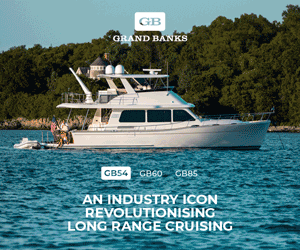Taking flight
It’s been a while since Sunseeker has produced an open boat focused solely on performance, but the new Hawk 38 marks a return to the builder’s roots.
Written by Charlotte Thomas
12 March 2020
‘We suggest,’ said the email rather worryingly, ‘that you bring a change of clothes.’ This is not necessarily what you expect to read in an invite to a world premiere and test, and it lead me to think one of two things – that the Sunseeker Hawk 38 was either going to deliver a wet and wild ride, or that it was going to be scary beyond belief.
Given the Hawk’s specs and its heritage, it could easily have been either, or both. Based loosely on the hull of the thrill-a-minute Sunseeker XS2000, the Hawk is the culmination of a longstanding desire at Sunseeker to bring back some of the great names of its past. “It’s a new era for Sunseeker, getting back to a performance boat,” begins Sean Robertson, Sales Director at Sunseeker. “It’s something we’re very accustomed to and something that, except for the past few years, we have always had in our product stable.”
A quick look down memory lane brings up a series of iconic models, from the XPS34 and the 39 Cobra in the 1980s, through the Tomhawk, Thunderhawk and other Hawks of the 1990s, to the larger Renegade and the Predators and, ultimately, the insane XS2000 from the turn of the Millennium – arguably the last of the line before a desire for more volume and more cruising comfort became prevalent. “Slowly the market changed,” Robertson continues. “From the financial crisis in 2008, there was more emphasis not only on comfort but also in less ostentatious boating or on living the performance life.”
So why now for the Hawk?
“We have gradually started to see a shift,” Robertson says, “and you only have to look at regional markets such as the US or the South of France to see that the open, café racer-style boat is back in vogue.
It’s about getting to the beach restaurant first, in comfort and at speed, and I think there is also a new type of clientele comprising the children and grandchildren of older yacht owners. These next generations are preferring to invest in waterside property, and then to add a smaller performance boat to enjoy rather than basing themselves on a larger yacht.”
While the design team at Sunseeker HQ in Poole, UK, have long yearned for the chance to recreate the iconic blasters of the past, it was around 24 months ago that the team got the go to look seriously at a new performance model, with the design process itself taking 18 months. The resulting Hawk 38 is both a nod to the past and a call to the future. The team worked closely with legendary Italian designer Fabio Buzzi, who developed Hawk’s hull, added his prodigious performance and racing knowledge into the mix, and finalised the construction method which uses hand-laid glassfibre and an injected foam core to create an unsinkable and sturdy hull and deck.
On top of Buzzi’s work, the Sunseeker team put in another 7,500 design hours, and the result does not disappoint.
The Hawk had arrived in the hands of the Sunseeker team just the evening before our trial. It meant that our high-octane blast around the Solent didn’t just represent a world premiere for a select few members of the press, but also for the Sunseeker team themselves. The prototype had previously been run in anger lightship across Lake Como in Italy, where Buzzi and the test crew had logged a top speed of 68.6 knots, but our day presented a very different proposition. This Hawk was fully finished and decked out and, moreover, was going to show us what it could do in a heavy chop and a stiff breeze that was hovering between 15 and 20 knots.
Nestling into the Besenzoni hydraulically cushioned race seats – which feature electrically controlled squabs to allow for standing or seating positions – the controls fall easily to hand. Standard spec gives the helm Mercury’s Zero Effort Digital Engine Controls, with separate throttles and shift levers. This hints at the performance ambitions of the Hawk, and indeed the throttles are positioned such that they can be operated by the co-pilot – a heavy nod to racing set-ups, and useful when the seas get lumpy where throttle control as the props skip from wave crest to wave crest becomes something to consider.
Power delivery from throttling the twin Mercury Verado 400R outboards is smooth, while the active outboard trim system helps keep things in check – although an FB Design 2TAB trim tab system is also available as an option. In the fresh breeze and with a short, one-metre sea running, the Hawk rides the hump around 15 to 16 knots before settling onto full plane, at which point the knots stack up quickly as you open the taps. Through 30 knots and 40 knots she feels very easy, then with the bow trimmed down a little as she climbs past 50 knots she feels solid and controlled. The inflatable stabiliser tubes that run down either side of the hull, controlled by an automatic pump system which maintains optimum pressure, provide a degree of stability and help to counter any tendency to chine-hop – something that the XS2000 could catch you out on at high speeds. The tubes also help with cornering in a seaway where the Hawk – while providing jolts in tight turns in waves – never feels like it is about to high-side and throw you from your perch.
As we blasted downwind tracking straight and true – and riding the wave crests as if in flat water – the Simrad 16-inch MFD showed us sneaking over 60 knots to top out at 61.1 knots. We eased back the throttles a little for the turn, and then headed back into the teeth of the breeze where we topped out at a shade under 53 knots. Again, although we managed a little air in the chop she still felt controlled and safe.
Moreover, there was very little sound or vibration from the hull, deck or fittings at any speed. This is one of the benefits of Buzzi’s foam-filled construction method, and also of the design decision to include the seating and other deck elements into the deck moulding. Increased coaming heights over those found on the XS2000 give a sense of security without making you feel like you are buried in the boat, while the glass elements in the coamings not only increase the feeling of being on an open boat but also help to connect the profile of the Hawk to the familiar angles and window lines of the wider Sunseeker range.
Even at 60 knots, wind and spray buffeting for helm and co-pilot is minimal, and this is thanks to extensive computational fluid dynamics (CFD) and finite element analysis (FEA) work carried out by the Sunseeker design team.
“We had various styling options for the console and hardtop, and we ended up with an all-in-one design,” explains Luke Stride, Sunseeker’s Design Office Manager. “We were a bit concerned about underway speed, so we conducted CFD at 30 knots and 60 knots to see how shielded the driver, navigator and passengers were. We then tweaked the design to minimise the wind flow around the console. The side screens, for example, have a little turn on them that flicks the wind up, and there’s another flick from the bow as well which takes the air up so it hits the top part of the console and not the bottom half. These were important tweaks.” There is also ventilation at the bottom of the console to remove negative pressure areas at speed which would otherwise suck air and salt spray into the seating area. It means that while there will inevitably be some wind when travelling at high speed, the Hawk maintains a dry ride bow to stern.
Such aerodynamics work is unusual in leisure yacht design, but it highlights how Sunseeker aimed to improve comfort and practicality on board without sacrificing outright performance. The design also features Buzzi’s trademark, squared-off anti-stuff bow, a further feature designed to make driving the Hawk over 50 knots easier for owners who perhaps don’t have experience driving performance boats at high speeds, meaning they can enjoy the thrill-ride without scaring themselves or their guests half to death.
“There is some heritage of the XS2000 in the hull, although not in the deck or the powertrain,” Robertson offers. “Clients really loved the experience of the XS2000 when they were driving but it was never the best for guests or family because you were quite exposed and it was quite uncomfortable. So for the Hawk we took that basis but changed the design of the hull, incorporating outboards rather than inboards (and adding an extra step accordingly), and making it simpler to use and more comfortable.”
As Robertson points out, the carbon hardtop, suspension seating, more practical layout, and the stability tubes and the benefit they bring to the user of the boat, all add up to more practicality and safety on board.
While the emphasis is on getting somewhere quickly and in style, the Sunseeker team thought long and hard about amenities and functionality for a day on the water. The bow offers a sun pad, under which there is a storage locker that has been fitted with two charge points to carry two Seabobs. There is an option for a drop-in carbon swim ladder to complement the built-in stainless step ladder found aft to port, and the forward locker can also be configured to take one Seabob and the carbon ladder.
Aft of the sun pad, aft-facing U-shaped seating can be enhanced with a removable carbon table which stows behind the seating’s backrest. A triple-seater bench behind the four Besenzoni suspension seats allows for a social aft cockpit, and this can also be fitted with two optional Webasto drawer fridges for those all-important cool drinks. There is decent storage under seats and sole, while the technical area aft is easily accessible. Further options include a sunshade for the foredeck supported by carbon poles, while comfort of a different kind has also been considered with the inclusion of a head, sink and stowage under the console, accessed via a door in the console’s front. It’s a squeeze, but definitely an important addition.
“Imagine,” says Robertson, “that you’ve come back from the beach restaurant, had a couple more drinks on board and maybe some swimming, which means you’re spending a little more time on board – it’s a comfort that the head is there if it’s needed.”
In spite of the narrow beam – the moulded deck measures just 2.32 metres, although the beam increases to 3.01 metres with the tubes inflated – the floor plan has been carefully considered so that moving about the Hawk is easy, even down the sides of the console to get between fore and aft areas.
The moulded beam was actually conceived with a particular party trick in mind – the hardtop can be removed, and the Hawk can then fit into a standard container to be shipped anywhere in the world, even with the outboards still fitted.
“We have clients,” says Stride, “who have multiple properties and who want to ship their boat between them, and a container is a very easy and cost-effective way of doing that.” It also means that the Hawk will likely appeal to superyacht owners who want a chase boat but who need the ability to shift locations easily.
For all the talk of comfort and practicality, though, the Hawk has been conceived to bring back the raw enjoyment that those iconic models from the past gave owners and their guests, and that’s exactly what it delivers. It’ll draw admiring glances from onlookers in the marina, and when you get going it’s a smile-wide thrill ride that will snag you the prime buoy off the beach bar before your mates have even rounded the headland. And as it turns out, even in a moderate seaway, you won’t have to change your clothes when you get there.




